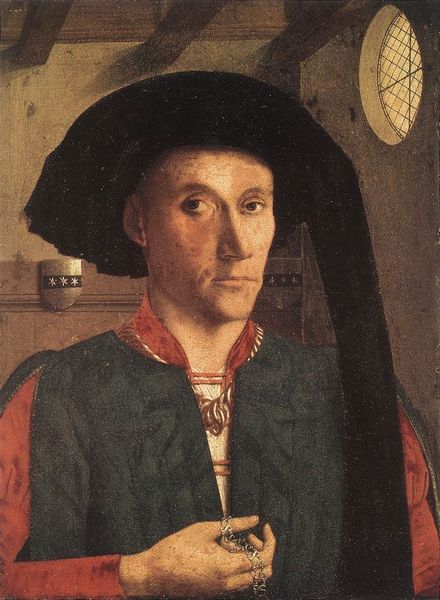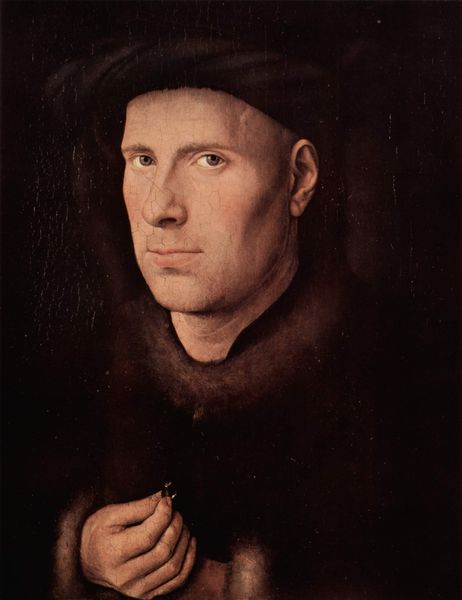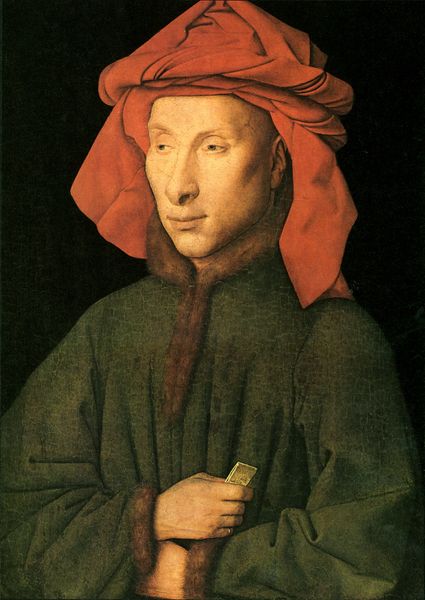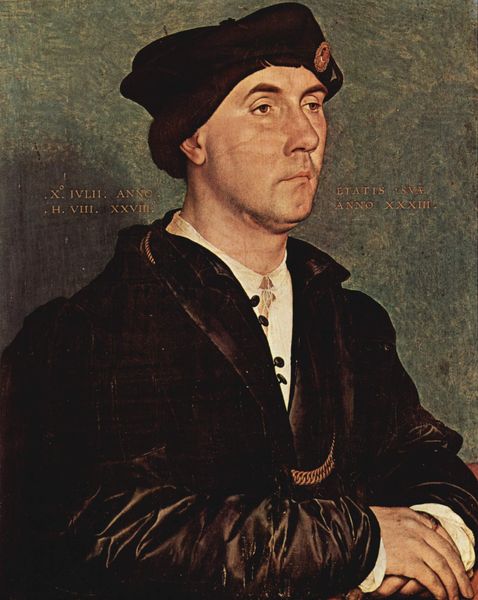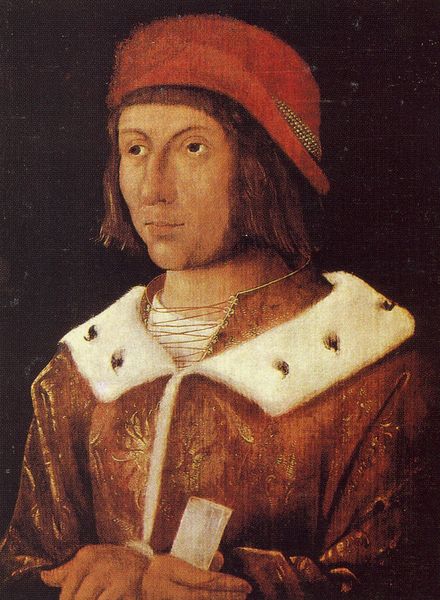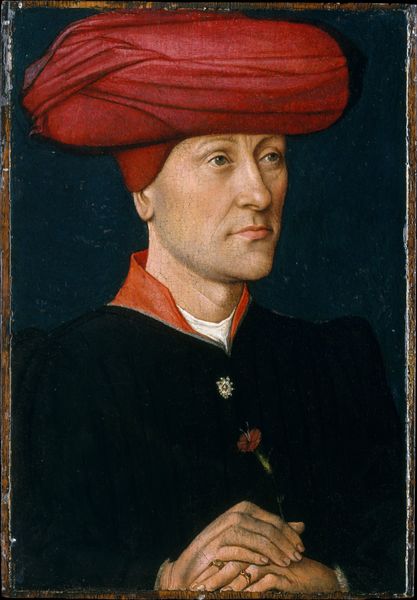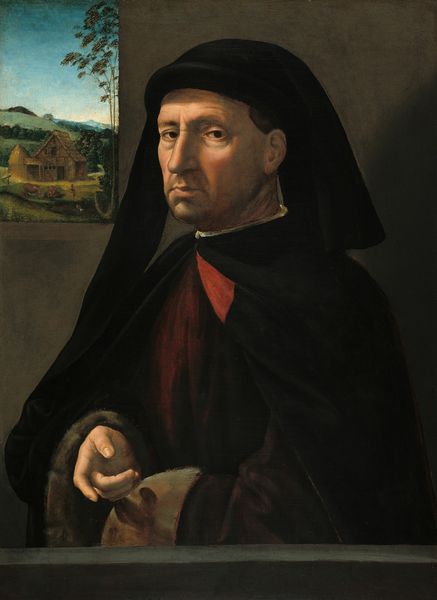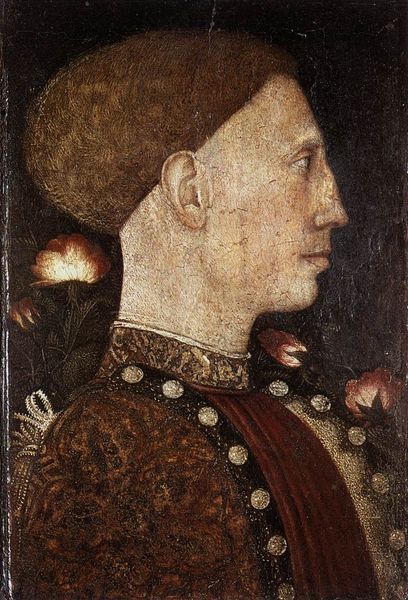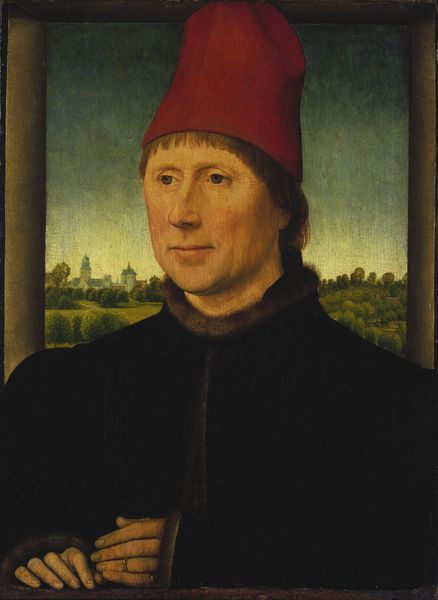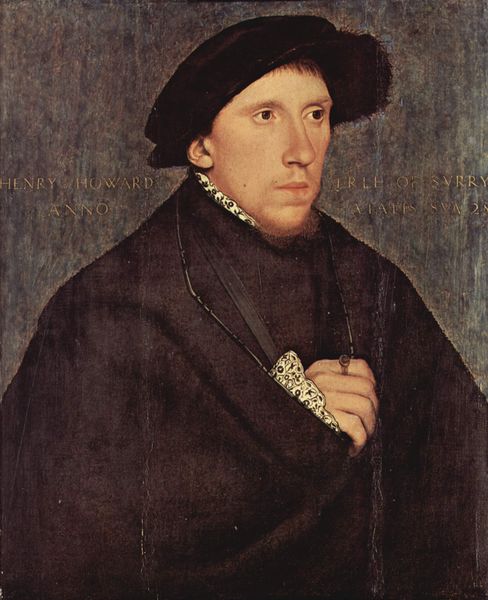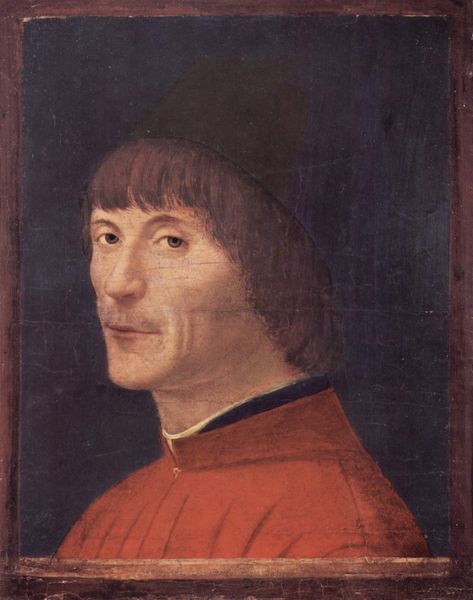
painting, oil-paint
#
portrait
#
portrait
#
painting
#
oil-paint
#
figuration
#
northern-renaissance
#
early-renaissance
#
realism
Copyright: Public domain
Curator: Look at the direct gaze of this subject! Painted around 1440 by Jacques Daret, this compelling “Portrait of a Man” renders a highly realistic, yet perhaps slightly idealized, likeness in oil paint. What do you make of him? Editor: There's an immediate stoicism that emanates from his visage, a severity underlined by the austere dark backdrop and the subject's pale complexion. But then you notice that flamboyant red chaperon. It is an odd combination, somber yet grand. Curator: The sitter's clothing absolutely communicates status, power, and wealth. It invites discussion about Northern Renaissance notions of the self and public presentation. How might such garments broadcast societal roles? What's being omitted or amplified? Editor: His garment clearly elevates him, marking him as distinct, setting him apart from the populace. What isn’t seen is the labour or struggle it took to afford this richness. Was this a depiction crafted to serve political objectives? Or one celebrating mercantilism and a growing middle class? Curator: That contrast interests me. Early Renaissance art often presented very deliberate power dynamics. Considering period notions around class and gender, this representation may offer space for debate, as the bright clothing might feminize the figure and undermine traditional perceptions of authority. Editor: Or, his serious gaze is intended to reaffirm control. The way the light reflects off his sharp nose makes him imposing, especially in contrast to the very smooth handling of the red cloth. This image could very well affirm social expectations. There's also an assertiveness suggested by his prominent facial features. It speaks of conviction, of unwavering determination, which, in the correct social conditions, signals the leadership and right to rule. Curator: And we can’t ignore the obvious: access. Oil painting was coming into its own in the Netherlands, as evident from its stunning verisimilitude, further bolstering an image that broadcasts success and position within society. Editor: Precisely. What may appear initially as a straightforward portrayal holds layered meanings tied to cultural, economic, and even gendered perceptions of its historical context. It asks the contemporary audience to contemplate how identity is shaped, performed, and understood within socio-political systems. Curator: Exactly. The artwork demands critical viewing practices so we might be able to deconstruct its inherent implications and power dynamics. Editor: In revisiting historical moments, such as the world embodied in “Portrait of a Man,” one gains invaluable perspective and recognition concerning present political nuances that continue to evolve.
Comments
No comments
Be the first to comment and join the conversation on the ultimate creative platform.
